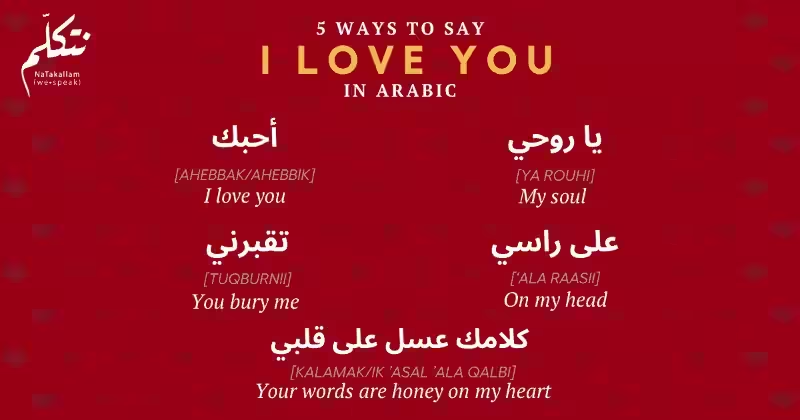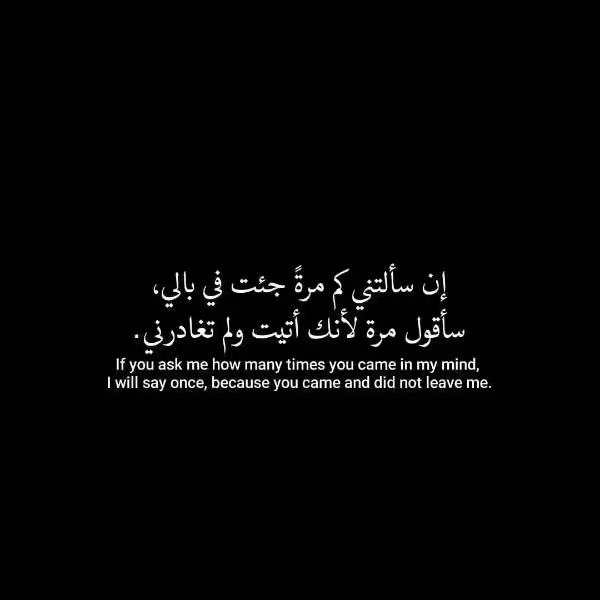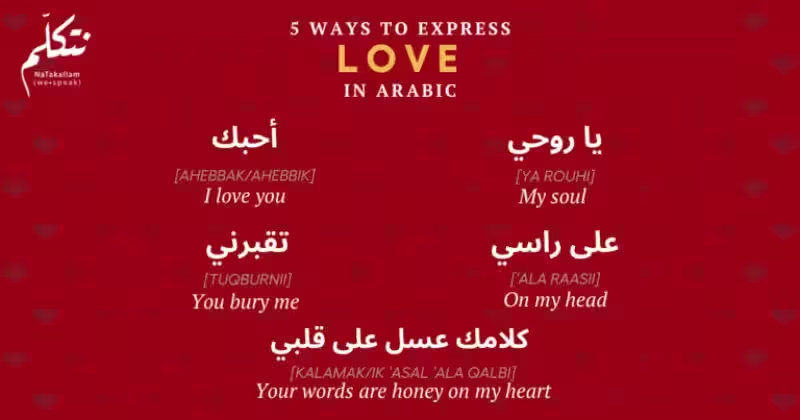
Learning a new language isn’t just about vocabulary; it’s about understanding the nuances of expression, especially when it comes to expressing deep emotions like love. This article delves into the various ways to say “my love” in Arabic, highlighting the importance of context and regional variations. It aims to be a useful guide for anyone interested in expressing affection in the Arabic language.
Understanding the Importance of Context in Arabic
Arabic, like many languages, has a rich tapestry of expressions, and the best way to say “my love” depends heavily on the context. Are you speaking to a close friend, a romantic partner, or a family member? The level of formality and the relationship dynamic significantly influence the appropriate phrase. This nuance is crucial for effective communication and avoiding misunderstandings. Furthermore, different dialects of Arabic further complicate matters, adding layers of linguistic diversity to the expression of affection.
Exploring Formal and Informal Options
For formal situations, such as addressing a respected elder or someone you don’t know well, a more neutral and respectful term might be preferred. The direct translation of “my love” might not be the best choice. Think of addressing someone as “my dear” or “my esteemed friend,” phrasing that acknowledges their status without implying a personal, intimate connection. In contrast, informal settings might allow for a wider range of options.
Unveiling the Richness of Arabic Dialects
The beauty of Arabic lies in its diverse dialects. What might be an acceptable phrase in one region might sound odd or even inappropriate in another. For example, while “حبيبي (habibi)” is commonly used in many Levantine dialects and means “my beloved,” it might be less suitable in a formal setting or in some other regional variations. Knowing the dialect spoken by the person you’re addressing is paramount for choosing the most appropriate expression.
Unveiling Common Expressions for “My Love”
While a direct translation of “my love” doesn’t always exist, there are several phrases that embody the sentiment. Let’s explore some common ways to express affection in Arabic:
General Expressions of Affection
- حبيبي (habibi): This is a very common and versatile phrase, often used for romantic partners or close male friends. It literally translates to “my beloved.”
- حبيبتي (habibti): The feminine counterpart of “habibi,” this term is used for female romantic partners or close female friends. It translates to “my beloved.”
- عزيزي (
azīzī): This term means “my dear” or “my esteemed one” and is a more formal and respectful option. It can be used for both men and women. - عزيزتي (
azīzti): The feminine version of “عزيزي”, this term can also be used for women in formal settings.
Regional Variations and Nuances
Different dialects have unique ways of expressing affection. In some regions, you might encounter more colloquial or less common expressions that carry the same sentiment. For example, some regions might use more descriptive phrases to convey love, emphasizing the specific qualities of the person being addressed. Researching the specific dialect you’re communicating in is essential for finding the perfect match.
Beyond the Words: Understanding the Cultural Context
Beyond the literal translation, expressing “my love” in Arabic requires understanding the cultural context. Gestures, tone of voice, and the overall relationship dynamics play a significant role in conveying affection. It is important to be mindful of these cultural nuances to avoid misinterpretations and ensure your message is received correctly.
The Significance of Gestures and Tone
The tone in which you say “my love” can greatly alter its meaning. A gentle and loving tone will convey affection, while a harsh or abrupt tone may be perceived negatively. Body language, such as physical touch or eye contact, can further enhance the expression of love and affection. These nonverbal cues are just as important, if not more, than the spoken words.
The Importance of Respect and Formality
Maintaining a level of respect, especially with elders or strangers, is key in Arabic culture. While expressing affection is important, it should be done in a way that maintains the appropriate level of formality. This consideration helps ensure smooth and harmonious communication.
Conclusion: Embarking on the Journey of Arabic Affection
Ultimately, learning how to say “my love” in Arabic goes beyond simply memorizing phrases. It’s about understanding the nuances of expression, the cultural context, and the crucial role of respect and formality. By taking the time to research different dialects and expressions, you’ll be well-equipped to express your affection authentically and respectfully. Remember that each interaction in Arabic is a unique opportunity to show your love through both words and actions.
FAQ: How do you say “My Love” in Arabic?
What are the different ways to say “My Love” in Arabic?
There isn’t one single definitive translation for “My Love” in Arabic. The best way to express this depends heavily on the context and the relationship between the speakers. Arabic, like many languages, uses a variety of terms, ranging from formal to informal, and even poetic expressions. To accurately answer this question, more context is needed.
Are there formal and informal ways to say “My Love”?
Yes, there are various levels of formality in Arabic, and the appropriate choice depends on the relationship and the situation. A casual, everyday expression might be very different from a more formal or affectionate one used in a romantic context. Consulting with native speakers or using an Arabic language learning resource would provide a more nuanced understanding of these variables.
What is the most common way to say “My Love” in Arabic?
Unfortunately, without specific details about the intended context, identifying one single most common way is not possible. The most suitable phrasing will depend heavily on the relationship and the social context.
How do different dialects of Arabic express “My Love”?
Regional dialects of Arabic have distinct vocabulary and expressions. The term used to express “My Love” might vary significantly between, for example, Egyptian Arabic, Levantine Arabic, or Gulf Arabic. Seeking out resources specific to the dialect you are interested in will provide the most relevant answers.
Are there any poetic or figurative expressions for “My Love”?
Yes, Arabic poetry often uses evocative and metaphorical language to express affection. These expressions might be more suitable for a romantic or passionate context. Again, access to Arabic poetry and literature would be invaluable for discovering these figurative expressions. However, this is beyond a simple translation for general use.
Where can I find more information about expressing affection in Arabic?
For a comprehensive understanding of expressing affection in Arabic, exploring Arabic language learning resources and communities dedicated to Arabic language learning would be incredibly helpful. These resources can provide examples, context, and nuanced details about the most appropriate expressions in different situations. Online forums, language exchange partners, and language learning apps are all excellent avenues for this.








